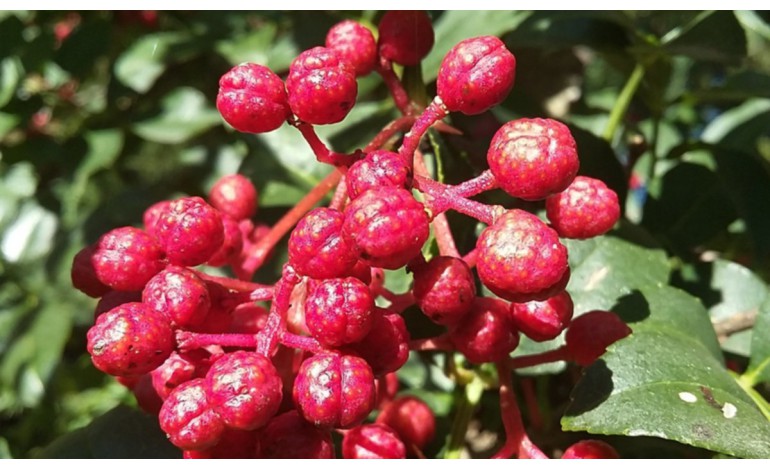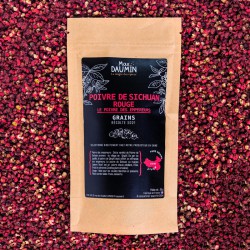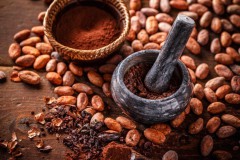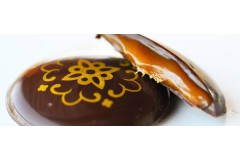History:
Sichuan pepper has been cultivated since Antiquity in the eponymous province in China. It is a mountainous region where Sichuan's pepper acclimatizes very well, even high altitudes (1500m). This small purple red bay is harvested in the fall to remove that the shell (the black seed inside brings bitterness).
He is commonly called "málà", an association of two Chinese characters meaning: "numb" ( 麻 ) and "spicy (spice)" (< /SPAN>
She spread quickly in neighboring countries like Tibet, Bhutan, Indonesia. It was not in the 13th century that she arrived in Europe thanks to Marco Polo who brought her back. She made the happiness of Venetian gastronomy at the time of the Doges. But she fell into oblivion and was only "woke up" at first by botanists. Described in 1824 by the famous botanist Carl von Linné then defined in the genus Zanthoxylum by the Swiss botanist Augustin Pyrame of Candolle. The word zanthoxylum comes from the ancient Greek ξανθός (xanthos), meaning "yellow", and ξύλον (xylon) meaning wood. Yellow dye was once made from the roots of certain species.
It took almost two more centuries that these berries were not invited again into the kitchen. Some gastronomic chefs began to tame it giving the success that we know now.
four or five spices? Sichuan pepper enters the composition of the five spices which is from China. It includes pepper from Sichuan, star anise, cinnamon, cloves and fennel. Not to be confused with the four spices that comes from France (cinnamon, nutmeg, cloves, pepper) botany: Sichuan pepper (Zanthoxylum bungeanum) is part of the famous family of zanthoxylum. Family in which we find Timur pepper, Sansho pepper for the best known. Sichuan's pepper is a bushy tree 5 to 6m high that will give berries that strangely resemble tiny citrus. These bays once dried open in small lobes revealing the seed. We only keep the seed envelope. Sichaun pepper develops a peppery taste, a feeling of warmth and lemony at the end of the mouth. These citrus fragrances are due to a very simple reason: the genre of zanthoxylum belongs to the large family of Rutaceaes. And the Rutaceaes understand the Citrus genre which is citrus fruits, in other words Sichuan pepper is a cousin far from citrus. Taste and Use: Sichuan pepper is renowned for its many health virtues. He is recognized by soothing and invigorating effects but also aphrodisiacs and antioxidants. It is thus used in Chinese medicine as a painkiller. Consuming this bay would also promote transit and digestion, the Chinese regularly uses it to fight against stomach aches. On the cooked side, Sichuan's pepper inevitably brings pep to your dishes. It is used very well with meats, poultry, fish but also and simply with rice or legumes. He will ally very well with foie gras, chocolate or even sorbets! Like all zanthoxyltum, connoisseurs will appreciate this heat effect in the mouth, which causes a phenomenon of paresthesia (anesthesia of the mouth). The feeling caused is not quite a feeling of spice but more a feeling of pseudo-chainur accompanied by a phenomenon of paresthesia (anesthesia of the mouth). The two compounds (whose name derives from the Japanese zanthoxylum, Sansho) Alpha Sanshool & Alpha Hydroxy Sanshool are the responsible. These compounds are found only in zanthoxylum. For those who know, the brèdes mafane (acmella oleracea) used in the delicious romazava (Malagasy dish) give almost the same feelings of heat and anesthesia. have a good day, max Daumin Epices Max Daumin or 2017-2018 silver 2020-2021 bronze 2019 | National grocery trophy Artisan producer of the Culinary College of France 2021





